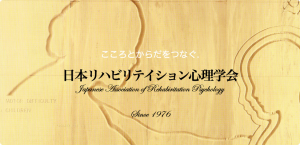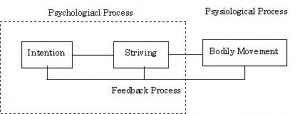
 Psychotherapeutic principles are also emphasized in rehabilitation programs for the disabled and chronically ill. For treatment of cerebral palsy persons, since 1966, every kind of techniques including traditional orthopedic methods and neurological training such as ‘Bobath method’ and ‘Vojta method’ has been practiced. In Japan, Naruse’s ‘Jiko-control’ training system (1981), including Jacobson’s method of progressive relaxation (Dohsa-hou), has been developed for the purpose of psychotherapy and health of mind and body on the viewpoint of psychosomatic medicine (Naruse, 1992). Dohsa-hou as a technique is based primarily upon psycho-rehabilitation rather then psycho-therapy.
Psychotherapeutic principles are also emphasized in rehabilitation programs for the disabled and chronically ill. For treatment of cerebral palsy persons, since 1966, every kind of techniques including traditional orthopedic methods and neurological training such as ‘Bobath method’ and ‘Vojta method’ has been practiced. In Japan, Naruse’s ‘Jiko-control’ training system (1981), including Jacobson’s method of progressive relaxation (Dohsa-hou), has been developed for the purpose of psychotherapy and health of mind and body on the viewpoint of psychosomatic medicine (Naruse, 1992). Dohsa-hou as a technique is based primarily upon psycho-rehabilitation rather then psycho-therapy.
In recent years, there have been an increasing interest in cerebral palsy as well as in other previously neglected illness of childhood. The associated increased interest in the whole field of neurological and psychological disorders of childhood has led to a closer study of earlier stages of development. In treatment of cerebral palsy, Karel and Berta Bobath (1962, 1964, 1956) have made a great contribution. In Bobath treatment method for cerebral palsy, the learning of voluntary movement appears to depend on the achievement of the movement and sensation of movement. Bobath (1966) indicated that cerebral palsy is the result of a lesion or maldevelopment of the brain, non-progressive in character and existing from earliest childhood. The motor deficit finds expression in abnormal patterns of posture and movement, in association with an abnormal posture tone. The lesion which is present in the brain when it is still immature interferes with the normal motor development.
Beside Bobath, many sorts of theories and techniques were proposed by Dorman, G., Temple, Fay, Kabat & Knott, Vojta and others. In each of these theory and the technique that is characterizes as its own, however, the common ground is that each of them attaches its importance to the activities of nerves and brains (Ohno, 1991).
In 1967, G. Naruse gave a new viewpoint to the disabilities of motor action in cerebral palsy children. He made his notion on the basis of the fact that although the disabilities in cerebral palsy are resulted from physiological dysfunction, these may be influenced by their psychological activities. He made his viewpoint based on the following three observations: subjects with cerebral palsy (a) move their body parts during sleep but not when awake, (b) move their body parts somewhat better during hypnosis, and (c) find difficulty in speaking in front of unfamiliar persons. Naruse therefore devised a psycho-rehabilitative technique for these subjects, called Dohsa-hou.
Dohsa means a holistic process of motor action which consists of the inner psychic activities of a bodily movement and Hou means method. “When we intend to move some parts of our body, we make striving to realize the bodily movement according to our own intention. If the striving is appropriate to the movement, the intended movement can be realized” (Naruse, 1973). The method of Dohsa-hou is based upon such concept.
The process of Dohsa can be divided into two: one is psychological (for example, intention and striving), and the other is physiological (for example, body movement, body posture). It is schematized as a process of “intention – striving – body movement” – the control system of human motor behavior on the base of information procession (Fig. 1). At first, an intention of a motor action comes up not by input stimulation but by needs of himself. The intention may be composed of a goal image of a bodily movement or of a process of bodily movement and a plan to perform the goal. The striving to actualize the intention is indispensable for realistic bodily movement. As a result of such a suitable striving a bodily movement comes out following to the original goal image and sensations from vision, motion and so on. As a result of such a collation, sometimes the striving is continued step by step until the bodily movement is performed according from to the original intention (Naruse, 1973, 1988).
==== efferent information[1]
—— afferent information[2]
Fig. 1 Psychological schema of control system of human action
In the process of client’s goal-directed striving, ‘the trainer is able to activate the client’s mind and facilitate the activity of his self through his experiencing of goal directed Dohsa’ (Naruse, 1985, 1992).
The utility of Dohsa-hou for counseling as a supplementary technique has recently been noticed because voluntary concentration and striving to client’s own body for relaxation or motoric manipulation by himself making his matter of concern to direct inside and make him to easily talk to himself. These clinical experiences have helped some pioneers to open a new way to the study of “Dohsa therapy” which is one kind of nonverbal psychotherapy, mainly using Dohsa-hou. Verbal tool is used only for supplementary help.
[1] Efferent refers to the conduction of nerve impulses from the central nervous system outward toward the periphery (muscles, glands). Efferent neurons carry information to effectors and are commonly called motor neurons or pathways.
[2] Afferent refers to the conduction of nerve impulses from the periphery to or toward the central nervous system. Afferent pathways are neural pathways that carry information from the receptors to the central nervous system.


 Special Olympics Iran
Special Olympics Iran